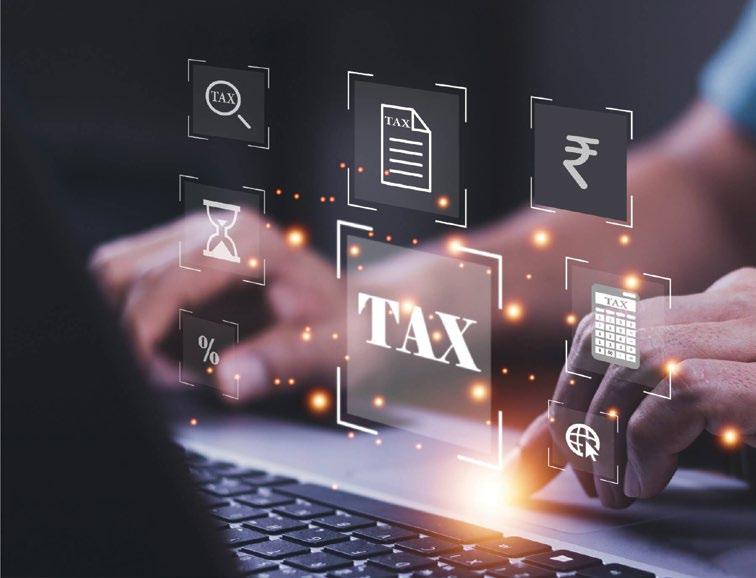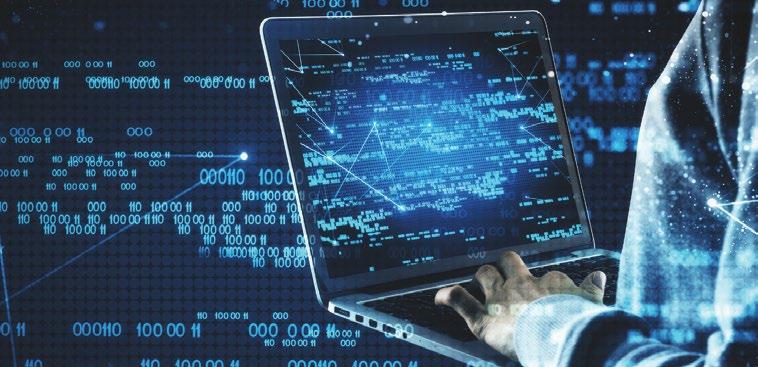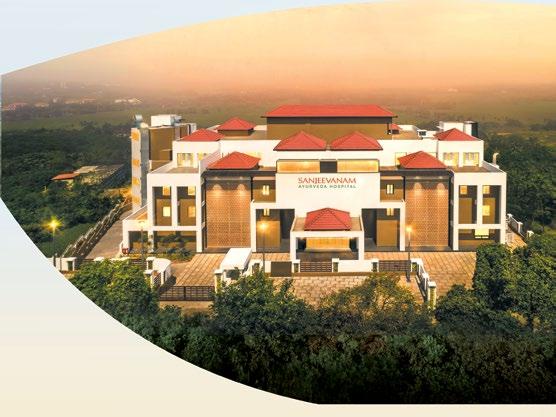
11 minute read
Withholding Tax On Software-Related Payments - An Analysis
1. Software – Typical business models
Payments towards “software” has been a subject matter of continued litigation. While the tax payer depending on the business model would contend that such payments should not be subjected to withholding tax in India, the Department would contend otherwise. The Department’s contention has been morbidly revolving around the contention that the payments partook the nature of “royalty” under Section 9(1)(vi) of the Income-tax Act, 1961 (“the Act”) and Article 12 of the concerned tax treaty.
Advertisement
The argument of the Revenue stood bolstered when the Hon’ble
Karnataka High Court in the case CIT Vs Samsung Electronics Co Limited [2012] 345 ITR 494 held that payments effected by an Indian company towards import of a shrinkwrapped software partook the nature of “royalty” both under the Act and the related tax treaty. The Hon’ble High Court negatived the argument of the assessee that when any buyer purchases a software, there was no transfer of any intellectual property/ copyright which would entail its classification as “royalty”; on the contrary, all that the assessee did was to purchase a copy of the software without the right to exploit a “copyrighted right”.
Briefly, the dispute surrounding taxability of software payments revolves around the following business/ operating models: i. Where a party in India purchases a software from a non-resident supplier for his own use; ii. Where a party in India purchases a software from a non-resident supplier for further sale – This would typically apply in the case of a reseller of a product; iii. Where a non-resident after purchasing the software from another non-resident resells it to an Indian distributor or an end user; iv. Where the software is sold as an integral part of a hardware. v. Whether the software in question is a customized software or not or whether software development service is provided. vi. At times, entities enter into cost contribution agreements with respect to expenditure incurred for installation and maintenance of computer software. In such a scenario, the overseas entity recharges the cost to the concerned Indian entity. vii. At times, software is acquired through purchases effected from electronic media, for instance, downloading of a software (say, adobe).
The Department’s contention has been morbidly revolving around the contention that the payments partook the nature of “royalty” under Section 9(1)(vi) of the Incometax Act, 1961 (“the Act”) and Article 12 of the concerned tax treaty.
In this note, I intend to delve on the vagaries regarding a copyright and a copyrighted article, whilst also considering the recent judgment of the Hon’ble Supreme Court in the case of Engineering Analysis Centre of Excellence Private Limited [2021] 125 Taxmann.
com 42. 1.1 Distinction between a copyright vs a copyrighted article
Courts in India have dissected payments toward computer software from the prism of whether the payment is towards a “copyrighted right” (aka a copyright) vis-à-vis a copyrighted article. For instance, the Delhi High Court in the celebrated judgment in Ericcson AB [2012] 204 Taxman 192 held that software incorporated as part of the hardware would not be subjected to withholding tax as it was akin to purchase of a good. The High Court in the said case relied on the Supreme Court judgment in the case of Tata Consultancy Services Vs State of AP (2004) 271 ITR 401 where it held that copyrighted software are goods and therefore subjected to sales tax. The Hon’ble High Court in the said judgment also elaborated on the fine distinction between a copyright and a copyrighted article. Courts have held that if a person acquires a software without any of the following rights, he only gets a copyrighted article and not a copyright. Broadly, the rights include the following:
• The right to make copies for purposes of distribution to the public by sale or other transfer of ownership, or by rental, lease, or lending.
• The right to prepare derivative computer programmes.
• The right to make public performance of the computer programme or the right to publicly display the computer programme. Sale of a software – A few judgments
[2014] 62 SOT 141 held that the bundle of facts viewed in juxtaposition with the above-mentioned rights would need to be evaluated in determining whether there is a transfer of a copyright or a copyrighted article.
In another ruling, the Mumbai Tribunal in the case of Kansai Nerolac Paints Limited [2010]
134 TTJ 342 held that a computer software when put on a media partakes the nature of “goods”. Accordingly, the Hon’ble Tribunal held that a payment for the same would not partake the nature of “royalty” under Article 12 of the India-Singapore tax treaty. A pertinent aspect in the case was the fact that the acquirer was granted a right to make a copy, but such right was limited to usage of the same within its own business. However, no source code or a similar content/ element was provided to the acquirer along with the program.
The Authority of Advance Ruling in Geoquest Systems BV [2010]
234 CTR 73 held income from supply for a specially crafted off the shelf software cannot be characterized as “royalty” both under the Act and the India-Netherlands tax treaty. The AAR went on further to hold that such amounts would not partake the nature as “fees for technical services” both under the Act and the India-Netherlands tax treaty. Similar views have been endorsed by the Mumbai Tribunal in Capgemini Business Services (India) Limited [2016] 158 ITD 1, where the transaction in question pertained to downloading of software for enabling use of a product. The Tribunal held that such use would not tantamount to transfer of a copyright but only that of a copyrighted article which would not fall within the purview of the term “royalty” both under the Act and the related tax treaty.
Licensing arrangement – A few precedents
The Kolkata Tribunal in the case of ITC Limited [2017] 79 Taxmann.com 206 held that in the case of a software licensing arrangement, where the software developer had the granted the assessee, a perpetual, non-transferable, irrevocable, non-exclusive and non sub-licensable right in respect of a computer software. The Tribunal observed that the Appellant had only granted a right to use the copyright in the computer software and that the license granted did not constitute a copyright in the software within the meaning of Section 14 of the Copyright Act, 1957. A similar view was also held by the Delhi Tribunal in the case of Datamine International Limited [2016] 48 ITR(T) 229.
2. Beneficial provisions of the tax treaty – Interplay of Section 90(2) of the Act
2.1 Meaning of the term “computer software” in the context of “royalty” under the Act The term “computer software” has been defined in Explanation 3 to Section 9(1)(vi) of the Incometax Act, 1961 (“the Act”) to mean “any computer programme recorded on any disc, tape, perforated media or other information storage device and includes any such programme or any customized electronic data”.
In the context of computer soft- ware, the term “royalty” under the Act would comprise of payment/ consideration including lumpsum payment made by a resident for transfer of all or any rights relating to computer software supplied with a computer or computer based equipment by a non-resident manufacturer. This would include payments under any scheme approved under the Policy on Computer Software Export, Software Development and Training, 1986 of the Government of India.
It would also be pertinent to note that Finance Act, 2012 made various retrospective amendments to nullify various interpretation pertaining to the definition of the term “royalty”. One such amendment effected in 2012 was the introduction of Explanation 4 to Section 9(1)(vi) of the Act, which reads as follows:
“For the removal of doubts, it is hereby clarified that the transfer of all or any rights in respect of any right, property or information includes and has always included transfer of all or any right for use or right to use a computer software (including granting of a licence) irrespective of the medium through which such right is transferred.”
As evident, the Act contains an expansive scope, one would also need to consider the provisions of the extant tax treaty. It would also be pertinent to note that a retrospective amendment was also effected through the introduction of Explanation 5 and Explanation 6 to Section 9(1)(vi) of the Act.
2.2 Interplay of Section 90(2) of the Act – Its key contours
The taxability of payments qua a non-resident is required to be determined based on the provisions of the Act and the corresponding provisions of the tax treaty. Essentially, the provisions of section 90(2) of the Act provides that the provisions of the Act would apply to the extent they are more beneficial to an assessee in comparison with the corresponding provision of the Double Taxation Avoidance Agreement (“DTAA” or “tax treaty”). To put it differently, the provisions of the tax treaty would apply if the said provisions were more beneficial than the provisions of the Act.
The overriding provisions of the DTAA vis-à-vis the Act has been upheld in a catena of judgments. For instance, the Hon’ble Calcutta High Court in the case of Davy Ashmore India Limited [1991] 190 ITR 626 whilst considering the correctness of Circular No 333 dated 02 April 1982 issued by the Central Board of Direct Taxes (“CBDT”), held that the provisions of the tax treaty would override the generic provisions under the Act, notably, sections 4 and 5 of the Act. The said view was endorsed by Hon’ble Karnataka High Court in the case of CIT Vs RM Muthaiah [1993] 202 ITR 508, where the Court undertook an evaluation of the contours of section 90 of the Act qua distribution of powers of taxation between the signatories to a tax treaty and there- upon upheld its sanctity. The said views of the Karnataka High Court in the case of RM Muthaiah (supra) was subsequently affirmed by the Hon’ble Supreme Court in the case of Azadi Bachao Andolan [2003] 263 ITR 706. The overriding provisions contained in section 90 of the Act was also upheld by the Hon’ble Gujarat High Court in the case of Arabian Express Line Limited [1995] 212 ITR 31.
The Hon’ble Supreme Court of India in the case of Azadi Bachao Andolan [2003] 263 ITR 706 fortified the said doctrine. In the said judgment, the Hon’ble Supreme Court noted the following key principles of law, which have been summarised below in the ensuing paragraphs:
• The power to enter into a tax treaty stands circumscribed by section 90)(2) of the Act. The power to enter into tax treaties to the Central Government was through the issuance of a notification having regard to section 90(2) of the Act.

• Once the requisite notification was issued under section 90(2) of the Act by the delegate, ie, the Central Government, the concerned assessee is entitled to seek the benefits under the concerned tax treaty even if the provisions of the tax treaty were inconsistent with the provisions of the Act.
• After a combined reading of sections 4 and 5 of the Act, the Court held that the said sections were embedded with the phrase “subject to the provisions of this Act.”. Consequently, the provisions of section 90 of the Act would take precedence over the provisions of sections 4 and 5 of the Act. The Hon’ble Court accepted the dictum of the Hon’ble Andhra Pradesh High Court in the case of CIT Vs Vishakapatnam Port Trust [1983] 144 ITR 146.
• The Court held that the principles governing interpretation of tax treaties are not the same as those in the interpretation of a statutory legislation. Treaties should be seen in the context of “aiding commercial relations” between treaty partners, and a “bargain” agreed to between treaty countries as to the division of tax revenues between them in respect of income falling to be taxed in both jurisdictions.
Quite recently, post introduction of Section 206AA of the Act, the Special Bench of the Hyderabad Tribunal in the case of Nagarjuna Fertilizers & Chemicals Limited (2017) 55 ITR (T) 1, where the Special Bench held that the provisions of the DTAA which by virtue of section 90(2) would override the machinery provisions contained in Section 206AA of the Act. The said principle would apply irrespective of the non-obstante clause contained in section 206AA of the Act and the same is required to be read down in order to give effect to the provisions of the DTAA.
It would also be pertinent to note that the treaties entered into by India with Turkmenistan, Russia, Romania, Morocco and Trinidad and Tobago specifically include payments for “use of or right to use computer software” within the definition of the term “royalty”. Hence, one could argue that in the absence of such verbiage in other treaties, the same would stand excluded. The said proposition has been endorsed by the Hon’ble Mumbai Tribunal in the case of Qad Europe BV [2017]
53 ITR(T) 259, where the Tribunal held that the payments would not partake the nature of “royalty” inter-alia on the ground that the India-Netherlands tax treaty does not include software while defining the term “royalty”. Moreover, in the said case, the Appellant had given the customer the right to reproduce, which was limited to making it usable for internal purposes and not for commercial exploitation.
3. Key aspects of the judgment of the Supreme Court in the case of Engineering Analysis Centre of Excellence Private Limited [2021]
125 Taxmann.com 42

The Hon’ble Supreme Court in the case of Engineering Analysis Centre of Excellence Private Limited [2021] 125 Taxmann. com 42 upheld certain key propositions of law which include the following:
• The Court expressly accepted the definition of the term “computer programme” from the Copyright Act, 1957. The Court held that the expression “copyright” has to be understood in the context of the statute which deals with it and thus one would need to consider the provisions of Sections 14, 16, 30 and 52 of the Copyright Act, 1957.
• In order to constitute as “royalty”, there must be parting of any of the seven acts contemplated in Section 14 of the Copyright Act, 1957. Further, the transfer of a material substance does not as a sequitur serve to transfer the “copyright” therein.
• The right to reproduce and the right to use computer software are distinct and separate rights, which should be evaluated separately.
• The insertion of Explanation 4 to Section 9(1)(vi) of the Act cannot apply to any right for the use of or the right to use a computer software even before the term “computer software” was inserted in the statute.
• The Court also held the inser- tion of Explanation 6 to Section 9(1) (vi) of the Act with retrospective effect from 01.06.1976 was not logical.
• A license from the owner of a copyright which does not conferring of any proprietary interest or license would not fall within the purview of Section 30 of the Copyright Act, 1957. Thus, a non-exclusive, nontransferable license, which merely enables the use of a copyrighted product cannot be reckoned as a license to enjoy any of the rights enumerated in Section 14 of the Copyright Act, 1957. Hence, payments towards such license fees would not partake the nature of “royalty” under the related tax treaty.
It may be noted that the Department has filed a review petition against the above judgment, which is now pending consideration before the Hon’ble Supreme Court. In a recent judgment, the Hon’ble Division Bench of the Delhi High Court in the case of Milestone Systems AS (2023 DHC 1926 DB) quashed the order of the Department and directed the concerned Assessing Officer to consider the judgment in the case of Engineering Analysis Centre of Excellence Private Limited [2021] 125 Taxmann. com 42 despite pending of the review petition. This is indeed a welcome step


Rajiv Ambat Lifestyle Disorders Coach & Founder - NuvoVivo
About NuvoVivo (www.nuvovivo.com) Rajiv Ambat is the CEO of NuvoVivo, an online health & fitness company that is into medical fitness. He is a well-known speaker and author of the best-selling book - ‘The Midriff Crisis’ and lifestyle expert. Under the guidance of Mr Rajiv, his team at NuvoVivo help their clients manage/reverse lifestyle diseases like diabetes, cholesterol, fatty liver, uric acid, hypertension, PCOS, thyroid disorders, etc.









